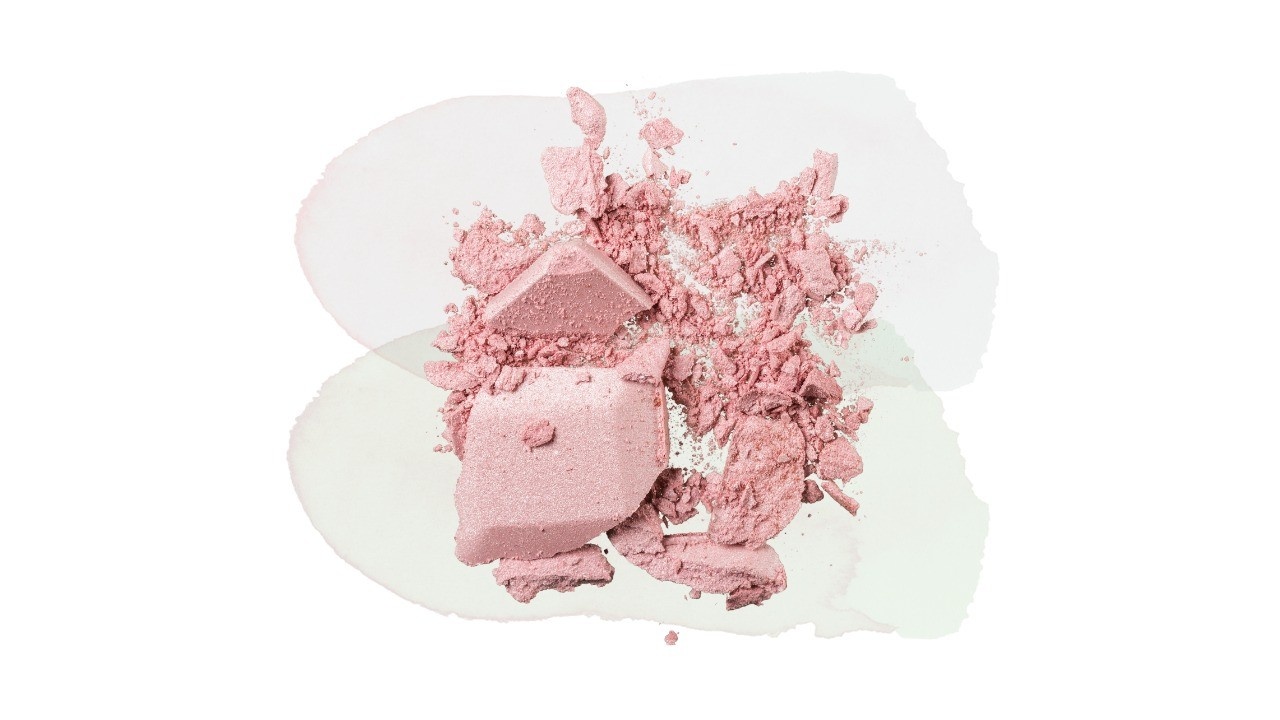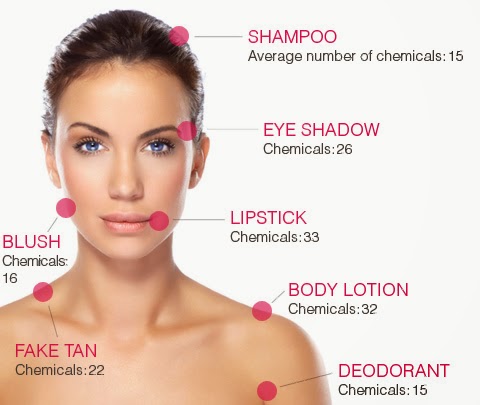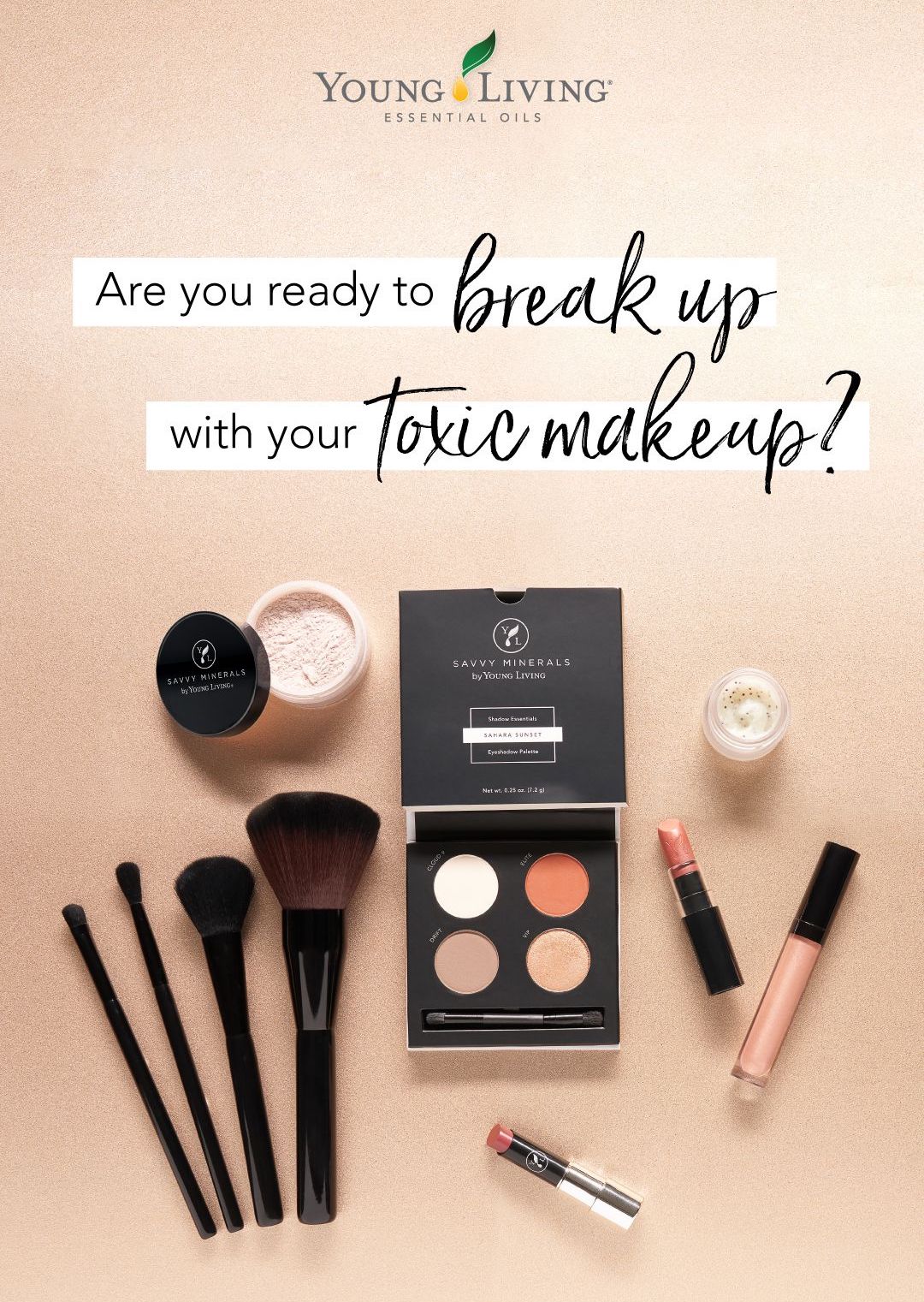
How Natural is Your Makeup?
Aug 09, 2021When you’re putting something on your face every day, you want to be careful. Makeup is meant to enhance your natural beauty, so shouldn’t it be natural too?
Did you know that your skin absorbs 60% of what you put on it? What do you want to absorb, natural products or toxic chemicals? Here are the top ingredients to avoid when it comes to your makeup:
Fragrance
Did you know that when a company lists “fragrance” as one of the ingredients, they aren’t required to disclose the actual chemicals that make up that fragrance. This means that any number of irritating chemicals can make their way in and you’d never know it. Some of these chemicals are linked to asthma, allergies (fragrance is one of the top 5 allergens in the world!) and hormone disruption.
Keep it simple and avoid fragrance altogether. Why does your foundation need to smell good anyway? That’s what perfume is for – and for me, I choose to use essential oils as perfume – completely natural and 100% plant based.

Parabens
Despite being found in 70-90% of cosmetics, parabens are just plain nasty and should be avoided at all costs.
Parabens are preservative chemicals that mimic estrogen, so they can wreak havoc on your hormones. Their use is linked to breast and skin cancer as well as decreased sperm count. They’re also easily absorbed so all of those harmful properties are soaking right in – through your skin.
Parabens are difficult to avoid, but it’s possible if you know what you’re looking for. Scan the label and put it back if you see any paraben listed, including methylparaben. If it’s paraben-free, it should be labelled as such. Or make it easy on yourself and go with a cosmetics company that doesn’t use parabens at all – Savvy Minerals by Young Living is a reputable one we love!

Triclosan
Commonly found in antibacterial soaps, triclosan is an antimicrobial chemical that is also found in some cosmetics. It’s linked to thyroid issues and has also contributed to the rise in antibiotic-resistant superbugs.
Triclosan is pretty easy to spot – just look for it by name listed as an active ingredient. It’s likely to be found in products which are promoting their cleanliness or are labelled as “antimicrobial.”
Formaldehyde-Releasing Preservatives

You may not see formaldehyde listed as an ingredient, but it could still be in there. This makes it very difficult because companies don’t just dump a bunch of formaldehyde into their products. Instead, they add other chemicals that work together as they decompose to release formaldehyde. Formaldehyde is a known skin sensitizer, allergen and carcinogen.
To avoid cosmetics that produce formaldehyde, look out for these ingredients:
- DMDM hydantoin
- Diazolidinyl urea
- Imidazolidinyl urea
- Methenamine
- Quaternium-15
- Sodium hyroxymethylglycinate
- Bronopol (2-bromo-2-nitropropane-1, 3-diol)
- 5-Bromo-5nitro-1,3-dioxane
Sodium Laureth Sulfate
This is a common ingredient in many cream-based cosmetics, such as foundation and concealer, as it helps skin and hair absorb products. While helpful in that aspect, it’s also commonly contaminated with cancer causers like 1, 4-dioxane and ethylene oxide. It can also cause skin irritation, canker sores, eye damage AND acne.
To steer clear of sodium laureth sulfate, look out for any sulfates listed on the label and polyethylene glycol.
Retinyl palmitate, Retinyl acetate, Retinoic acid and Retinol
Retinol products are super popular because of their anti-aging properties. What most people don’t know is that in the sunlight, they become carcinogenic. For this reason, they are often found in night creams, but not all cosmetic producers limit them to night cream and use them in day products too!
Save anti-aging products for before bedtime and steer clear of them in your cosmetics. One popular culprit is anti-aging foundation – double-check for anything in the retinol family.
Petroleum distillates
 This toxic ingredient is often combined with cancer-causing chemicals and it is most often found in mascara. They are produced in the same oil refineries as auto fuel and heating oil – not exactly what you would expect of an ingredient found in your cosmetics.
This toxic ingredient is often combined with cancer-causing chemicals and it is most often found in mascara. They are produced in the same oil refineries as auto fuel and heating oil – not exactly what you would expect of an ingredient found in your cosmetics.
This ingredient may also cause contact dermatitis, an itchy, irritating rash. Not what anyone wants – ever!
Phthalates
Phthalates are chemicals found in color cosmetics that are linked to a host of health issues. Endocrine disruption, developmental and reproductive toxicity and cancer are all linked to this chemical – hence its prohibition in cosmetics in the European Union.
Despite its ban in the E.U., phthalates are still commonly used in the United States and Asia. To be on the lookout, check labels for these ingredients: phthalate, DEP, DBP, DEHP and fragrance.
Lead
We all know that lead was banned in paint used on kids' toys for a reason. Despite this danger, 61% of lipsticks contain lead, including some of the major store brands.
There is no safe level of lead exposure – even a little bit can be dangerous. It’s a neurotoxin which is linked to learning, language, and behavioral problems. It also causes reproductive and hormonal issues in both men and women. If you’re applying this every day, imagine the amount of lead exposure you’re getting. On. A. Daily. Basis.
We know, this is a long and overwhelming list. How can you possibly avoid all of these chemicals? It’s definitely not easy, but you can make it a little simpler by doing your research, reading labels and choosing a reputable brand for your cosmetics.


SO WHAT NOW??
So, now that you have emptied out your makeup bag and discovered a host of chemicals which you didn’t know were there, what next? Don’t worry, I did the same too. But that’s okay, this Blog isn’t meant to scare anyone, I just want to raise awareness so that people can make their own choices – fully informed of what’s in makeup items that claim to be oh-so natural.
I decided I wanted truly natural makeup products. I was pregnant when I made the decision and I didn’t want chemicals on my skin being absorbed into my baby – he didn’t deserve that. And neither did I. So I found an alternative through Savvy Minerals which is the makeup range created by Young Living. Young Living are an Essential Oil company that puts all things natural at the top of their agenda. They use natural iI decided I wanted truly natural makeup products. I had a little baby when I made the decision and I didn’t want chemicals on my skin that I was going to rub off on him (as I cannot stop smooching my baby all day long…) – he didn’t deserve that. And neither did I. So I found an alternative through Savvy Minerals which is the makeup range created by Young Living. Young Living are an Essential Oil company that puts all things natural at the top of their agenda. They use natural ingredients to create a range that is not just a chemical-free product, but a higher quality product AND in a range of colours.

As a qualified clinical aromatherapist, I have years of experience working with essential oils and I hold regular classes via What’s App, Telegram, and Zoom as well as broadcasting YouTube Webinars.
Look forward to talking with you soon!
xxx
Desiree

If you would like to sign up and become a member of Young Living you may do so HERE
Stay connected with news and updates!
Join our mailing list to receive the latest news and updates from our team.
Don't worry, your information will not be shared.
We hate SPAM. We will never sell your information, for any reason.

